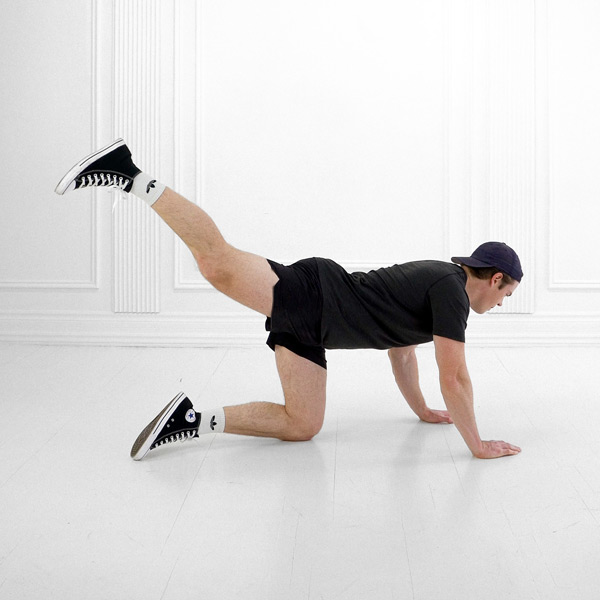Cable Glute Kickback
Cable glute kickback isolates the glutes by extending one leg backward against constant cable tension, targeting gluteus maximus for strength and stability; used as an accessory for lower body development and imbalance correction.
About Exercise
Equipment
Single Cable Machine
Difficulty
2/5 • Beginner
Primary Muscle Groups
Glutes
Secondary Muscles
Hamstrings, Abs
Accessory Muscles
Calves, Quads
Popularity Score
7
Goals
Training Style
Setup Requirements
Requires Rack
No
Requires Bench
No
Requires Spotter
No
Space Needed
Small
Noise Level
Low
Muscle Breakdown
View Muscle MapGlutes
10/10Glute Max, Glute Medius
Hamstrings
4/10Abs
3/10Transverse Abdominis
Calves
2/10Quads
2/10Programming
Typical Rep Range
12-20 reps
Rest Between Sets
30-60 seconds
How to Perform
Set cable pulley to lowest position and attach ankle cuff to one ankle. Stand facing machine, step back for tension, hinge forward at hips to 45 degrees, hold frame for support with flat back and engaged core.
- Shift weight to supporting leg with slight knee bend.
- Engage glutes to drive working leg straight back and up.
- Squeeze glutes at peak extension and pause briefly.
- Externally rotate foot slightly if desired for more activation.
- Slowly return leg to start without letting weight stack touch.
- Switch legs after reps on one side.
Coaching Tips
Form Cues
- Squeeze glutes hard
- Hips square to machine
- Neutral spine always
- Drive with glutes only
- Control the return
Breathing
Inhale as you return the leg forward; exhale as you drive it back while bracing core.
Tempo
2-1-2
Range of Motion
Extend working leg back until parallel to floor or slightly beyond with full hip extension; avoid hyperextending lower back.
Safety
Safety Notes
- Avoid lower back pain by keeping core tight
- Start light to master form
- Stop if feeling strain outside glutes
- Use machine for balance support
Spotting
Spotting not required; use machine frame for self-stability.
Common Mistakes
- Swinging leg with momentum
- Arching lower back
- Standing too upright
- Partial range of motion
- Upper body swaying
When to Avoid
- Acute lower back injury
- Hip impingement
Flexibility Needed
- Adequate hip extension range
- Ankle dorsiflexion for stability
Build Up First
- Basic hip hinge form
- Core engagement control
Also known as
Cable Donkey Kick, Ankle Strap Kickback, Standing Cable Kickback
Found this helpful?
Share your thoughts or help us improve this guide.
Similar Exercises

Machine Glute Kickback
Glute Kickback Machine
Glutes

Bodyweight Glute Kickback
Bodyweight
Glutes

Cable Single-Arm Tricep Kickback

Single Cable Machine
Triceps
Cable Clamshells
Single Cable Machine
Glutes

Cable Pull Through

Single Cable Machine, Rope Cable Attachment
Glutes

Cable Hip Abduction
Single Cable Machine
Glutes

Cable Kneeling Hip Extension
Single Cable Machine
Glutes
Dumbbell Glute Bridge
Dumbbells
Glutes

Single-Leg Glute Bridge
Bodyweight
Glutes

Bodyweight Glute Bridge
Bodyweight
Glutes


subscribe to our newsletter
Contact Us
hello@trainfitness.aiFind Us
130 Spadina Avenue, Toronto,
Ontario, M5V 0H4, Canada
©2025 All Rights Reserved
